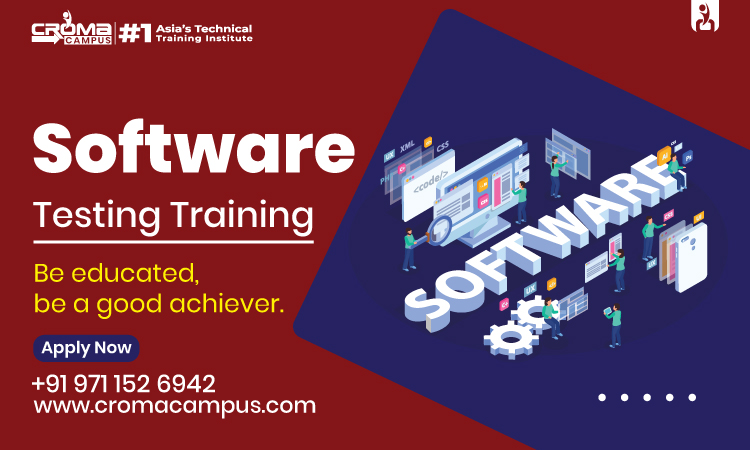
Software Testing is a critical part of the software development lifecycle, ensuring that products meet quality standards before reaching the end-users. As technology evolves, so do the methods and tools used in software testing. Staying updated with the latest trends is essential for anyone pursuing a career in this field. Here are some current trends in software testing that you should be aware of, whether you’re taking a Software Testing Course or a Manual-Testing Course.
1. Test Automation
Why It Matters:
Automation in software testing has been on the rise for several years, and its importance continues to grow. Automation helps in speeding up the testing process, increasing test coverage, and reducing human errors.
Tools and Technologies:
There are numerous tools available for test automation, such as Selenium, QTP, and TestComplete. Learning these tools can significantly enhance your testing capabilities and make you more valuable in the job market. Many Testing Courses now include comprehensive modules on test automation.
2. AI and Machine Learning in Testing
Artificial Intelligence Integration:
The integration of AI and machine learning into software testing is transforming the field. These technologies can predict potential problem areas, optimize test cases, and even perform some testing tasks autonomously.
Benefits:
AI can help in prioritizing test cases, identifying which tests to run first based on past test execution data, and spotting defects early in the development process. This trend is becoming a key focus in advanced Testing Courses.
3. Shift-Left Testing
Early Testing:
Shift-left testing emphasizes starting the testing process earlier in the development lifecycle. This approach helps in identifying defects early, reducing the cost and effort required to fix them later.
Implementation:
By integrating testing into the initial stages of development, teams can ensure better quality and more reliable software. Many Manual Testing Courses are now teaching methodologies to effectively implement shift-left testing.
4. Continuous Testing
Continuous Integration and Continuous Delivery (CI/CD):
Continuous testing is an integral part of the CI/CD pipeline, ensuring that every change made to the code is tested immediately. This practice helps in maintaining the quality of the software throughout the development process.
Tools for Continuous Testing:
Tools like Jenkins, Bamboo, and Travis CI are widely used for continuous testing. Understanding these tools is crucial for anyone looking to excel in the software testing field. Comprehensive Software Testing Course often cover these tools in detail.
5. Testing in DevOps
DevOps Culture:
The DevOps culture emphasizes collaboration between development and operations teams. Testing plays a critical role in this environment, ensuring that new features and updates are seamlessly integrated and deployed.
Key Practices:
In a DevOps setup, testers need to work closely with developers and operations teams, adopting practices like continuous testing and monitoring. This holistic approach to testing is a significant focus area in modern Testing Courses.
6. Performance Engineering
Beyond Performance Testing:
Performance engineering goes beyond traditional performance testing. It involves proactively designing and testing software to meet specific performance criteria from the early stages of development.
Importance:
This trend ensures that software applications are scalable and can handle high loads, providing a better user experience. Manual-Testing Courses now often include elements of performance engineering to provide a well-rounded education.
7. Security Testing
Growing Importance:
With the increasing number of cyber threats, security testing has become more critical than ever. This involves identifying vulnerabilities and ensuring that the software is protected against potential attacks.
Tools and Techniques:
Tools like OWASP ZAP and Burp Suite are commonly used for security testing. Understanding these tools and techniques is essential for modern testers. Many Testing Courses now have dedicated modules for security testing.
8. Test Environment Virtualization
Cost-Effective Solutions:
Test environment virtualization allows testers to create virtualized versions of physical environments. This approach is cost-effective and provides more flexibility in testing.
Benefits:
Virtualization enables testers to simulate different environments and scenarios, making it easier to identify issues that might only appear under specific conditions. This trend is gaining traction and is often covered in advanced Testing Courses.
9. API Testing
Focus on APIs:
As applications become more interconnected, API testing is becoming increasingly important. Testing APIs ensures that different software components interact correctly and efficiently.
Tools and Skills:
Tools like Postman and SoapUI are popular for API testing. Mastering API testing can significantly enhance your testing skill set, and it is a key component of many Software Testing Courses today.
10. Exploratory Testing
Human Insight:
While automation is crucial, exploratory testing brings the human element back into the process. Testers use their knowledge and intuition to explore the application and identify potential issues.
Training and Techniques:
Manual-Testing Courses often emphasize exploratory testing techniques, teaching testers how to think critically and uncover hidden defects that automated tests might miss.
Conclusion
Staying updated with the latest trends in software testing is essential for anyone looking to build a successful career in this field. From automation and AI to continuous testing and DevOps, these trends are shaping the future of software testing.
Enrolling in a Testing Course or a Manual Testing Course that covers these modern trends can provide you with the knowledge and skills needed to excel in this dynamic and evolving field. Embrace these trends, and you’ll be well on your way to becoming a proficient and sought-after software tester.









